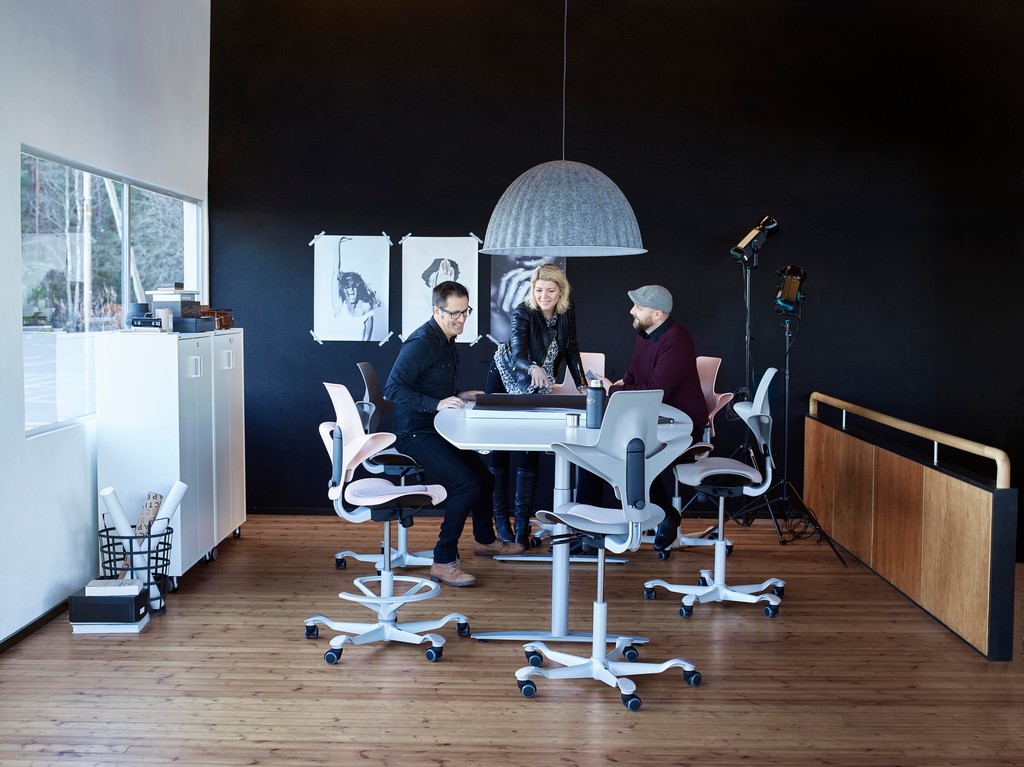A motivated employee is a high performing employee. This does not only refer to how managers or directors compliment employees performance, or simply just to increase their salary. It’s not just about salary afterall. There’s several other factors that affect employee’s motivation to work.

The Environment – crucial part!

Creating an ideal working environment can be seen as akin to removing or reducing the amount of friction that workers encounter, both physically and psychologically, when trying to do their jobs. There’s 3 most effective ways when it comes on creating a good solid environment in the company.
#1 The Space
The age of workers being relegated to tiny cubicles, where they are cut off from any interaction with their co-workers, is coming to an end. The new popular trend is known as an open office space– designed to be spacious and open with no barriers between works.

HAG Capisco Office Chair Bringing Style
This layout encourages collaboration, commitment, shared responsibility, and is often cited as the most productive layout for teams. Furthermore, one of the risk factors associated with burnout in the workplace is fewer opportunities for face-to-face contact with others.
An open office allows for less isolation and more interaction with our fellow humans, and could reduce the risk for burnout.
#2 The Equipment
As employees were spending long hours in the office, at their desks, and often performing repetitive tasks with the mouse, keyboard, etc, it affects to their health. Workers may not even notice, but small inefficiencies in their workstation can lead to reduced productivity, high risks of injury, and general discomfort (i.e. lots of friction that needs to be dealt with).
The field of office ergonomics emerged from this crisis, and thankfully there has been a lot of recent developments in the science of healthy work environments, helping to create a much more friction-less work-space. Studies have shown the importance of ergonomically designed office products at helping reduce issues like back pain and musculoskeletal symptoms.
To take advantage of this knowledge, consider making standard practice for all office chairs to be ergonomic, investing in standing desks to reduce sedentary behavior and improve overall health.

RH Mereo – the ergonomic task chair for you who suffer backpain.

HAG SoFi Mesh – your everday favorite ergonomic task chair

DubaB8 Adjustable Desk – you can work in your own ways, sitting with ergonomic task chair or standing for few moments to work, its both good for you!
#3 Avoiding Boredom, Providing Meaning

Majority of workers are most likely to be “not engaged” in their workplace, leading many to be essentially “miserable” in their day to day jobs. By being engaged at work is strongly linked to internal drivers, i.e. finding intrinsic meaning in the work being done.
In today’s specialized workplace, many employees play a small (albeit crucial) role in the overall product or process, which can blur the connection between work and meaning. As an example, does a worker checks for bugs in computer code necessarily make a meaningful connection between her/his work and the overall mission of the organization?

This can have adverse impact on motivation, and a potential high correlation to burnout. As a manager, careful attention should then be paid to the internal drivers of employees and the correlation to their job roles.
#4 The Team
It is indicated that skill sets of individual team members might not have much to do with the overall performance of the team. It might, in fact, have much more to do with the personality traits of the individual team members.

They break personalities down into 5 categories:
- Results-oriented.
- Relationship-focused.
- Process and rule followers.
- Innovative and disruptive thinkers.
- Pragmatic thinkers.
Finding the correct ratio of personalities for a given team is more crucial to the effectiveness of the team than other factors. Furthermore, determining precisely the role, the interaction and the values of individual team members will help determine how they will work together in the long term, and reduce friction overall.
Conclusion
Creating and enabling a motivated work force isn’t intuitive, or easy, or necessarily straightforward, but it can be done. Taking a critical look at all the factors involved, including the environment of your office, the equipment and workspace or your workers, the dynamics of your team, and the effectiveness of your feedback and evaluation practices, can help tremendously in creating a friction-less and highly motivated team and aiding in the long-term success of any organization.




